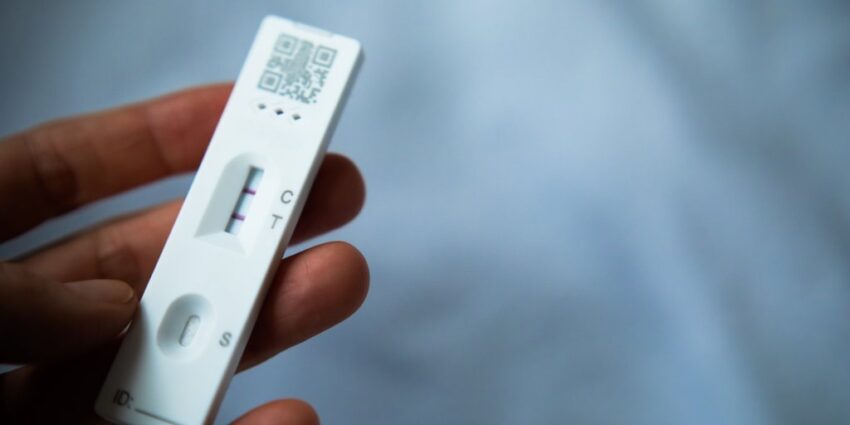At-Home COVID-19 Tests Expire. Here’s What to Know About Yours

If you stockpiled at-home COVID-19 tests during the great Omicron shortage, you may want to do a little research before using your diagnostics. Like food and medications, rapid COVID-19 tests expire—but figuring out when they go bad isn’t always as easy as glancing at the box.
Here’s what to know about the expiration dates on at-home COVID-19 tests.
When does my COVID-19 test expire?
The components of COVID-19 test kits can degrade over time, potentially affecting the diagnostic’s performance and accuracy, according to the U.S. Food and Drug Administration (FDA). Figuring out exactly how long a product lasts takes time, though. To know if a test performs well after two years, for example, the manufacturer would logically need at least two years of data. Since rapid COVID-19 tests are relatively new products, companies are collecting much of that data in real time—meaning their expiration dates can and do change.
[time-brightcove not-tgx=”true”]
The FDA sets expiration dates conservatively and then adjusts as needed. To start, at-home COVID-19 tests are typically authorized with expiration dates of four to six months after they’re made, the FDA says. But the agency can extend that window as new study results are available. That dynamic system means the date stamped on your test’s box may not be its current expiration date.
In January, the FDA extended the recommended shelf life of Abbott’s BinaxNOW test kits from 12 to 15 months, based on data from the company. CareStart tests distributed through the federal government’s free testing program can also be used for three months longer than their marked expiration dates, according to COVID.gov.
The California Department of Public Health went a step further in March, saying that, until further notice, consumers can use any at-home test beyond its expiration date as long as the “control” line shows up normally. (Your test kit should include guidance about the control line.) Officials from Washington State’s health department have also acknowledged that using technically expired but functional tests may be necessary in some cases.
To get the latest information about your tests, check the FDA’s website for updates about antigen tests and molecular tests. You may have to calculate the new expiration date yourself, using the lot number or date of manufacture stamped on the package.
Can I use a test even if it has expired?
If you’re used to ignoring food expiration dates, you may be inclined to do the same with COVID-19 tests. But—even though some people interpret the dates more liberally—the FDA says not to use expired kits. Dr. Ulysses Wu, system director of infectious diseases at Connecticut’s Hartford HealthCare, agrees it’s best to be cautious, because you may not get accurate results if you use an expired test. “You’re more likely to have false negatives rather than false positives, but that false negative could give a false sense of security when you actually are positive for COVID,” he says.
Since diagnostic expiration dates are a “moving target,” it’s possible that your test actually lasts longer than the box suggests. But, Wu says, “I would just follow [the latest] expiration date and if you really have a concern or you don’t want to throw it away, you can always call the company.”
How should I store my home COVID tests?
Time isn’t the only thing that can affect the quality of a COVID-19 test. Moisture and extreme temperatures can also impair its accuracy, Wu says. He recommends keeping medical supplies in a cool, dark place, like a kitchen cabinet, to keep them stable. Despite the name, your bathroom medicine cabinet is not a good place to store drugs and diagnostics because the room often gets hot and humid, Wu adds.
Extreme cold is also something to avoid. When the U.S. government first began distributing free at-home test kits this past winter, some people were concerned that the liquid reagents used in the diagnostic process might freeze during delivery. While the FDA says that’s not something to be too worried about, tests are meant to be used in environments kept between 59°F and 86°F. So if yours gets cold in transit, you should allow it to warm up (while in the unopened box) for a couple hours before swabbing.
And though it may be tempting after recent supply-chain issues, Wu discourages keeping a huge stockpile of tests on hand. It’s good to have a few around in case someone in your house is exposed to the virus or develops symptoms, but there’s no need to buy a lifetime supply at once, he says—both because they may expire before you can use them, and because it makes it harder for others to get the supplies they need.


